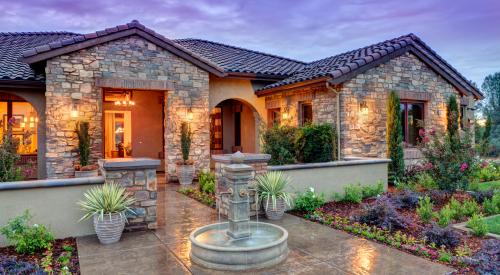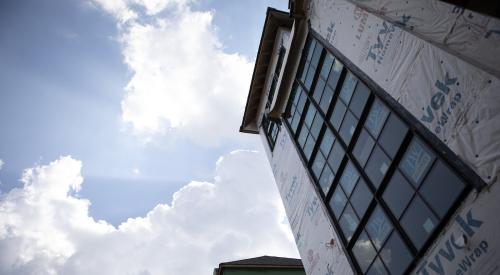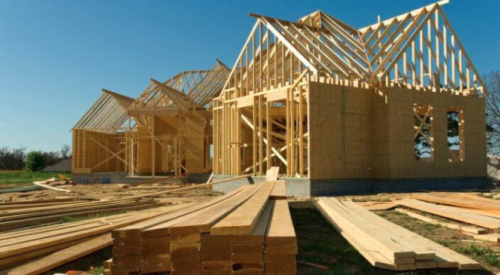|
At David Weekley Homes, it is understood that it takes one set of things to get shoppers to buy and a completely different set to satisfy them after the sale.
|
With a J.D. Power win in Austin, Texas, and high scores in three other markets, Houston-based David Weekley Homes (3,082 closings for $855 million in 2002) seems to have a handle on customer-defined quality.
“We look at shoppers and buyers as two separate groups,” chairman David Weekley says. “It takes one set of things to get them to buy and a completely different set to satisfy them after the sale. I’m not sure the things that convince people to buy should be part of a quality definition, although I’m certain they say that quality is one of the things they are after. That might better be described as part of a definition of value.”
Features or Quality?
Weekley believes many shoppers confuse design and features with quality. “We all know you can have great design and lousy quality. And people will say, ‘This is a quality home because it has granite countertops,’ but that’s a feature that has nothing to do with the way the house is put together. We’ve always accepted the traditional definition of quality as the physical attributes of workmanship and materials. Now we’re trying to figure out how much our customers’ quality perceptions are influenced by features and brand names on products and components in the home.
“In our purchasing habits and in what we look at the International Builders’ Show are things we may be able to sell as quality before closing, but the real experience of it comes only from living in the house,” Weekley asserts. “Before the sale, all you have are representations of quality. The biggest part of that is your reputation in the marketplace, but that’s almost entirely based on the experiences of homeowners communicated by word-of-mouth. And that might not correlate with the physical qual-ity of the product. We have a good reputation, but occasionally we build a bad house.”
Experiential Quality
While Weekley maintains that quality is mostly about materials and how houses are put together, he admits that the experiences of home buyers throughout the purchase process dramatically affect their perception of the quality of his company.
“Materials and workmanship —that’s the physical quality of our product, but on the experiential side, quality means communicating to meet customers’ needs,” he says. “During the purchase process, communication is the number one issue. We have to deliver on our promises.”
When asked if quality in product and service allows a builder to sell at higher prices, Weekley says it does “if you put together five or six years of consistently meeting or exceeding customers’ expectations. There’s money to be made in quality, mostly in referrals within the first six months to a year, when people are still excited about their new home. Once they’ve been in it three or four years, all that wears away.”
Shopping the Show
When asked how he looks for new products at IBS or evaluates products in the purchasing process, Weekley reverts to using the word value rather than quality. “We try to judge where people see the most perceived value,” he says. “There’s no way it’s not a guess. Manufacturers do consumer surveys and show them to us, but we don’t know. Is it worth it to pay the extra money for seven buttons on a dishwasher instead of four?
“We’re most interested now in products that may enhance the durability of our homes because builders are being sued for problems that occur 10 years after closing. Everybody’s product is durable up to the two years that J.D. Power measures, but we’ve got a lot longer view.”
Weekley says he is very careful about committing to use new products on a large scale. “First, I want to know about their testing, how long the product has been out and what the reliability is. I’ve been a pioneer, and it wasn’t fun. If we’re going to build homes with 10-year implied warranties, I don’t want to use anything that’s been out only a year. I won’t wait 10 years, but I might wait two or three. And I’ll certainly want to see destructive testing to give me some idea of the useful life. After all, I’m on the hook for 10 years even if the manufacturer goes out of business.”
Weekley says the biggest improvement in his company has come in warranty service. “In the last two years, we’ve really improved. That’s a big part of what J.D. Power measures.”
However, he says the quality of that service still can’t substitute for a house that meets materials and workmanship expectations and stands up over time. “People used to tell us a good warranty service experience could make customers like you even more than if they never had a problem. That’s now being shown not to be the case. You get more referrals if you never have to service a house.”
Weekley says his firm’s referral rates are going up in tandem with customer satisfaction scores. “Our internal rate is running 28% to 30% now, but that’s something we can’t compare with other builders because everybody computes it differently,” he says. “But we can compare our performance today with what we did last year and see that it’s going up.”
Probably, in Weekley’s case, the accurate definition of quality is whatever he’s selling that people are willing to pay more to get. It’s hard to see that as just materials and workmanship. Design, features and tender, loving care of customers are involved.












